

Death. In society, the nature of death and humanity's awareness of its own mortality has for millennia been a concern of the world's religious traditions and of philosophical inquiry.
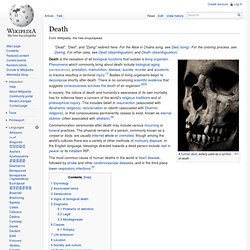
This includes belief in resurrection (associated with Abrahamic religions), reincarnation or rebirth (associated with Dharmic religions), or that consciousness permanently ceases to exist, known as eternal oblivion (often associated with atheism).[4] Commemoration ceremonies after death may include various mourning or funeral practices. One-way traffic. One-way traffic (or uni-directional traffic) is traffic that moves in a single direction.
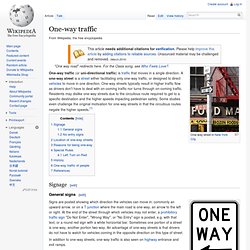
A one-way street is a street either facilitating only one-way traffic, or designed to direct vehicles to move in one direction. One-way streets typically result in higher traffic flow as drivers don't have to deal with on-coming traffic nor turns through on-coming traffic. Residents may dislike one-way streets due to the circuitous route required to get to a specific destination and the higher speeds impacting pedestrian safety. Some studies even challenge the original motivation for one-way streets in that the circuitous routes negate the higher speeds.[1] Drug intolerance. Drug intolerance or drug sensitivity is a lower threshold to the normal pharmacologic action of a drug.
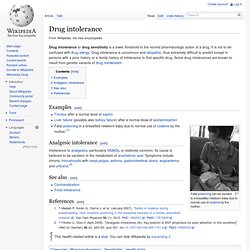
It is not to be confused with drug allergy. Drug intolerance is uncommon and idiopathic, thus extremely difficult to predict except in persons with a prior history or a family history of intolerance to that specific drug. Some drug intolerances are known to result from genetic variants of drug metabolism. Examples[edit] Failure. "Fail" redirects here.
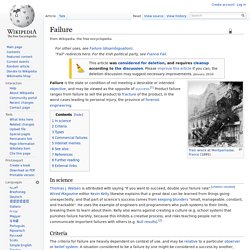
For the Irish political party, see Fianna Fáil. In science Criteria The criteria for failure are heavily dependent on context of use, and may be relative to a particular observer or belief system. Stop sign. A STOP sign A stop sign is a traffic sign to notify drivers that they must stop before proceeding.[1] Vienna Convention[edit] The Vienna Convention on Road Signs and Signals allows for two types of stop sign, as well as three acceptable variants.

Courage. Courage is the choice and willingness to confront agony, pain, danger, uncertainty or intimidation.

Physical courage is courage in the face of physical pain, hardship, death or threat of death, while moral courage is the ability to act rightly in the face of popular opposition, shame, scandal or discouragement. In some traditions, fortitude holds approximately the same meaning. Error. The word error entails different meanings and usages relative to how it is conceptually applied.

The concrete meaning of the Latin word "error" is "wandering" or "straying". Unlike an illusion, an error or a mistake can sometimes be dispelled through knowledge (knowing that one is looking at a mirage and not at real water does not make the mirage disappear). For example, a person who uses too much of an ingredient in a recipe and has a failed product can learn the right amount to use and avoid repeating the mistake. However, some errors can occur even when individuals have the required knowledge to perform a task correctly.
Examples include forgetting to collect change after buying chocolate from a vending machine, forgetting the original document after making photocopies, and forgetting to turn the gas off after cooking a meal. Republican Party (United States) History Founding and 19th century The first official party convention was held on July 6, 1854, in Jackson, Michigan.
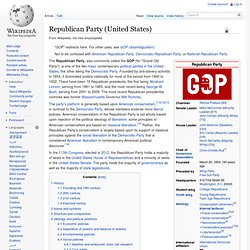
By 1858, the Republicans dominated nearly all Northern states. Volcano. A 2007 eruptive column at Mount Etna producing volcanic ash, pumice and lava bombs Santa Ana Volcano, El Salvador, a close up aerial view of the nested summit calderas and craters, along with the crater lake as seen from a United States Air Force C-130 Hercules flying above El Salvador.
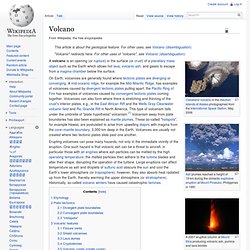
Christmas. While the birth year of Jesus is estimated among modern historians to have been between 7 and 2 BC, the exact month and day of his birth are unknown.[18][19] His birth is mentioned in two of the four canonical gospels.
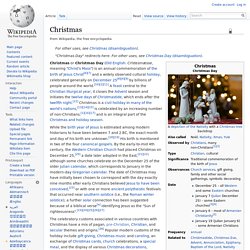
By the early-to-mid 4th century, the Western Christian Church had placed Christmas on December 25,[20] a date later adopted in the East,[21][22] although some churches celebrate on the December 25 of the older Julian calendar, which corresponds to January in the modern-day Gregorian calendar. The date of Christmas may have initially been chosen to correspond with the day exactly nine months after early Christians believed Jesus to have been conceived,[23] or with one or more ancient polytheistic festivals that occurred near southern solstice (i.e., the Roman winter solstice); a further solar connection has been suggested because of a biblical verse[a] identifying Jesus as the "Sun of righteousness".[23][24][25][26][27] Etymology Other names History. Blood. Human blood fractioned by centrifugation. Plasma (upper layer), buffy coat (middle, white colored layer) and erytrocite layer (bottom) can be seen.
Blood circulation: Red = oxygenated Blue = deoxygenated Human blood magnified 600 times Frog blood magnified 600 times Fish blood magnified 600 times. Risk. Risk is the potential of losing something of value, weighed against the potential to gain something of value. Values (such as physical health, social status, emotional well being or financial wealth) can be gained or lost when taking risk resulting from a given action, activity and/or inaction, foreseen or unforeseen.
Risk can also be defined as the intentional interaction with uncertainty. Risk perception is the subjective judgment people make about the severity of a risk, and may vary person to person. Injury. The knee of a patient is examined with help of radiography after an injury. An injury is damage to a biological organism caused by physical harm.[1] Major trauma is injury that can potentially lead to serious outcomes.
Classification[edit] The United States Bureau of Labor Statistics developed the Occupational Injury and Illness Classification System (OIICS). Masculinity. Masculinity is a set of qualities, characteristics or roles generally considered typical of, or appropriate to, a man. It can have degrees of comparison: "more masculine", "most masculine'". The opposite can be expressed by terms such as "unmanly" or epicene.[1] A near-synonym of masculinity is virility (from Latin vir, man).
Constructs of masculinity vary across historical and cultural contexts. The dandy, for instance, was regarded as an ideal of masculinity in the 19th century, but is considered effeminate by modern standards.[2] Traditional masculine norms, as described in Dr. Ronald F. Nature versus nurture[edit] Leadership. Theories[edit] Early western history[edit] The trait theory was explored at length in a number of works in the 19th century. Most notable are the writings of Thomas Carlyle and Francis Galton, whose works have prompted decades of research.[4] In Heroes and Hero Worship (1841), Carlyle identified the talents, skills, and physical characteristics of men who rose to power. Beauty.
The experience of "beauty" often involves an interpretation of some entity as being in balance and harmony with nature, which may lead to feelings of attraction and emotional well-being. Fire. Heat. Valentine's Day. Communism. Communism is represented by a variety of schools of thought, which broadly include Marxism, anarchism and the political ideologies grouped around both. All these hold in common the analysis that the current order of society stems from its economic system, capitalism, that in this system, there are two major social classes: the proletariat - who must work to survive, and who make up a majority of society - and the capitalist class - a minority who derive profit from employing the proletariat, through private ownership of the means of production, and that political, social and economic conflict between these two classes will trigger a fundamental change in the economic system, and by extension a wide-ranging transformation of society.
The primary element which will enable this transformation, according to communism, is the social ownership of the means of production. Socialism. Passion (emotion) Negativity effect. Love. For information about showing love on Wikipedia, see WP:LOVE and WP:♥. Aggression.